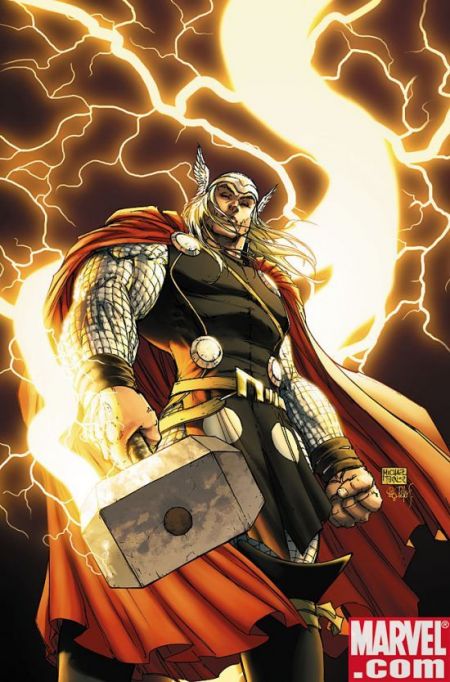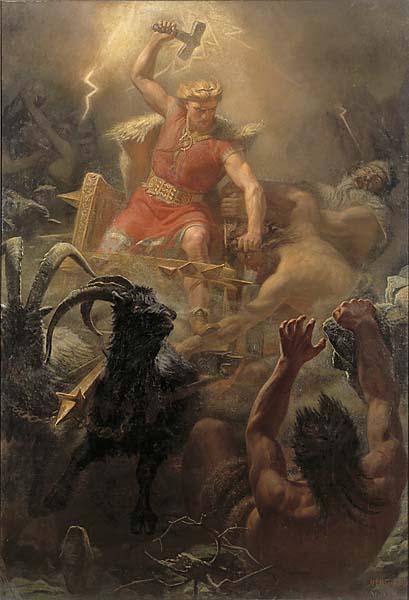Copyrights 101 - Why You Must Care About This
By Hervé St-Louis
November 10, 2008 - 10:24
Copyright law is not a sexy topic in Canada and most jurisdictions. Yet it affects all Canadians and citizens of various countries. Copyright law manages the usage and the relationship that the public, composed of private citizens, businesses, governments, organizations, such as schools, the media have with contents created by artists, designers, researchers, scholars, lawyers and writers. Ignoring copyright law, because of its near arcane workings is detrimental to everybody.
Trademark 101
Copyright law was created in a time where it was easy for say, one maker of embroidered handkerchiefs to masquerade as another maker of handkerchiefs with a better reputation. This was a response from the earlier move of some artisans to label and brand their products to differentiate them from their competitors. Less successful merchant thus, surmise, that if they borrowed the trademark of popular merchants, then they could sell their inferior products to the public.
 |
Copyrights and trademarks are not the same. In the example above, about the handkerchief, were I a law major, I would have failed my class by stating that a brand on a handkerchief was a copyright. Therein lies some of the common mistakes and misunderstandings about copyrights and trademarks. It is what makes most of us turn off and look elsewhere when the complex issue of copyrights and trademarks are mentioned. Yet, ignoring copyrights and trademark laws, and how they operate in your jurisdiction can have dire consequences on your daily life and common activities you enjoy.
The example of the branded handkerchief above is really about trademarks, which are closely related to copyrights but different. A brand, which in Canada is called a mark, identifies the owner of the trademark as the only entity allowed within its jurisdiction able to use a specific mark for a specific set of wares. Wares are products and services, such as the handkerchief in my first example. So our handkerchief maker could be granted, through the use of a trademark, the exclusive use of said trademark in a designated territory, most likely, a country. That same trademark can be registered in other countries separately.
Patents
Copyrights were really created so that writers and artists and anyone that develops something can benefit from the exclusive usage by the public of their creations. Notice that I did not use the word invention. Inventions, are ruled by patents. Patents allow inventors, who develop a new process to generate a ware to protect their inventions and of course, benefit by from usages. For example, if I created a machine to produce spicy meatballs, I could request a patent on that device, allowing me to benefit from it and making it illegal for anyone else to copy the device in order to produce their own spicy meatballs.
Lapsed Copyrights
Still with me? Okay, back to copyrights. Copyrights involve mostly what could be surmised as creative contents, such as photography, music, visual arts, video, performance arts (theatre, opera), writing, or the combination of any of them into multimedia or interactive arts. The original intent of copyright laws was to allow creators to benefit from their creations during their lifetime and allow their direct descendants to also benefit from them. In many countries, copyrights are in effect during the entire lifetime of the original creators and 50 years after their death. After this, it is said that the copyright fades and the creation becomes public domain.
For example, classic fables from Aesop’s fables have been in the public domain for centuries. Anyone can pick one of Aesop’s fable and adapt it for a comic book. However, when a creator takes one Aesop’s fable and adapts it into a new comic book, the creator is awarded a new copyright over his interpretation of Aesop’s fable in a comic book. If another cartoonist wanted to create another comic book with the same fable, he could. However, if this new comic book was too reminiscent of the other one, created previously, a judge, in a court would probably have to decide the extent of infringement, provided the first cartoonist wanted to sue the second one.
A well-known example of such a situation is the Norse god Thor. Marvel Comics publishes a comic book called Thor. This is one of their most popular characters. However, Thor does not belong to Marvel Comics. Any comic book publisher can publish stories about Thor, because the character and the entire Norse God pantheon are in the public domain. Several publishers, such as DC Comics have published stories about Thor. However, Marvel Comics has some degree of protection on its interpretation of Thor through copyrights. How Donald Blake, a crippled medical student invokes the power of Thor, how he dresses, how he interacts with others are clearly elements that were created by Marvel Comics and are protected.
Protecting Copyrights
In many countries, as mentioned above, copyrights exist only for a limited duration during the life of the creator and 50 years after its death. In the United States, this is not the case. Companies, such as Disney and Warner Brothers have requested from the United States' Congress, repeated extension of the copyright period to avoid a lapse in existing creations such as the first Mickey Mouse cartoons. Other countries are also evaluating the extension of the period of copyrights.
The owners of Mickey Mouse, or Daffy Duck, are of course not the original creators of the characters nor their direct descendants. These characters and much of the contents that exists in popular culture is owned by corporations. Corporations, are legal persons, but they do not live and die like actual humans. When creators sell their copyrights to companies, they sell their corporate rights but not their moral rights.
Moral Rights
Moral rights are inherent to anything a creator creates and cannot be sold or given away, only to direct descendants of a creator, after its death. Moral rights are what allow Alan Moore, the creator of The Watchmen to oppose any misuse of The Watchmen by DC Comics. For example, were DC Comics ever tempted to create a comic book sequel to The Watchmen comic book series, Alan Moore’s moral rights would allow him to block such a project, if he wanted.
Moral rights are useful for creators in other ways. For example, DC Comics could never ban Alan Moore from claiming that he created The Watchmen, nor could it stop artist Dave Gibbon from inserting Watchmen pieces in his promotional portfolio. Whether he could sell his original comic book pages, however, is outside of the scope of moral rights and back in corporate rights.
Work for Hire
Work for hire is how many corporations get around moral rights, albeit partly. In a work for hire relationship, it is clear that the corporation hires the creator to develop a commissioned project. From the beginning of the business relationship, it is clear that the ownership of the good will lay with the project’s sponsor, the corporation. Yet, some moral rights, like credits and the right of mentioning the project and using limited parts of that project in a portfolio, under fair use is allowed.
Fair Use and Fair Dealings
Fair use, is concept that is not agreed upon in all countries. For example, in the United States fair use provides educational users, the press, and satirists the right to use portions of copyrighted material without prejudice to the owners of the copyrights. In Canada, it is legal for Canadians to download music off the Internet for private usage, without purchasing a license to use that music. However, Canada offers no protection for satirists or educational users. As of this writing, it is technically illegal for Canadians to record a television show aired on television, although the majority of Canadians have recorded a television program in their lives.
Artist Representation
The Internet and new technology developments have been used as the rallying point for many organizations, managing copyrights on behalf of their members, such as the Society of Composers, Authors and Music Publishers of Canada (SOCAN) to request from governments more protections over copyrights and more rights to impose levies on various groups and industries, such as Web site owners. For example, the Canadian Private Copying Collective (CPCC) collects fees on several types of blank recording media sold in Canada and remit part of the collected money to its members.
Is Copyright Civil or Criminal?
Many corporate groups are demanding that governments criminalize copyrights infringements. In Canada, for example, copyrights infractions are still civil matters. It is up to the infringed party to prove in a court that there has been an infraction. The onus being on the infringed party, the cost to them is greater than if the infractions were criminal offenses and that government appointed prosecutors prosecuted alleged criminals.
Collecting on Behalf of Whom?
Many lobby groups representing industrial groups and corporate interests are hard at work trying to change copyright laws in many countries to benefit their members. In most places, the public is not aware of this. Other targeted groups, such as Web site publishers, like The Comic Book Bin, are also facing more challenges from organized lobbies that think that they deserve a cut from their revenues. Last month the SOCAN had proposed fees on Web site publishers, of 7% of their revenues. Affected Web sites were not limited to Canadian Web sites, like The Comic Book Bin. These would have had to be paid by any site that can be accessed by Canadians.
These measures were not enacted into what is known as Tariff 22, because of lack of evidence of usage provided by SOCAN. However, the organization is hard at work trying to figure out how to collect money in the most creative ways, be it hair salons, or karaoke bars. It is up to you, as a citizen to ask questions about those nongovernmental lobby groups and their powers to force the collections of levies on elevator music and videos embedded on YouTube.
 |
The fact that these levies and tariffs are complicated matters that only specialized lawyers comprehend easily is not a reason to shy away from asking questions and requesting that your elected officials become as versed about these issues as the lobby groups that continually impress over them. Because The Comic Book Bin is directly affected by some of the proposed tariffs being negotiated, we will cover and participate in the actual policy making in our own jurisdiction - Canada. We have no other choice. We have to protect ourselves from these groups that claim to deserve a share of our revenues using shaky arguments. More on that in another article.
Related Articles:
A Primer on Copyrights and Action Figures
Ramen Toy’s Maverick Action Figure Possibly Infringes Copyrights
Comic Problems #1: Copyrights versus Trademarks
Copyrights and the Superman Reboot
Copyrights and Comic Book Creators: Be Careful What You Wish For
Superman, Moses, Copyrights and the Public Commons
Response To Tom Spurgeon: Copyrights, Superman, and the Estates of Siegel and Shuster
Superman – More Copyrights Stupidity
Copyrights 101 - Why You Must Care About This
Copyrights Board of Canada Dismisses Reporter's Questions on Tariff 22 as Stupid
